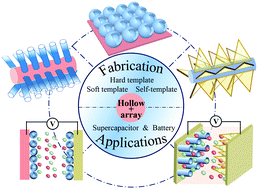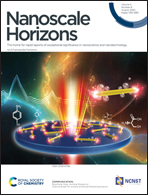Recent progress on hollow array architectures and their applications in electrochemical energy storage
Abstract
The structural design of electrode materials is one of the most important factors that determines the electrochemical performance of energy storage devices. In recent years, hollow micro-/nanoarray structures have been widely explored for energy applications due to their unique structural advantages. Their complex hollow interior and shell arrays enable fast ion diffusion/transport, provide abundant active sites and accommodate volume changes. Moreover, the direct contact of hollow arrays with substrates enhances the mechanical stability during long-term cycling. To date, huge progress has been achieved in the rational design of various hollow array architectures. However, a review on this topic has been rarely reported. Herein, the multifunctional merits and typical synthetic strategies for hollow array structures are analyzed in detail. Furthermore, their applications in electrochemical energy storage (such as supercapacitors and batteries) are summarized. The development and challenges of hollow arrays in terms of substrates, technique improvement and material innovation are discussed. Finally, their applications for energy storage and conversion are prospected.

- This article is part of the themed collection: Recent Review Articles


 Please wait while we load your content...
Please wait while we load your content...